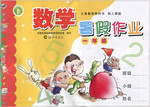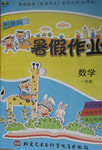题目内容
Only two of the students worked the maths problem out correctly. ______ all did it wrong.
- A.Other
- B.Others
- C.The other
- D.The others
代词辨析。Other 另一个、Others其他人、The other两个中的另一个,The others其余的,表示同一范围内的其他全部。根据题意,这些学生只有两个正确的计算出了那道数学题,其余的全错了。表示的是同一范围内的其余全部,选D。

 暑假作业海燕出版社系列答案
暑假作业海燕出版社系列答案 本土教辅赢在暑假高效假期总复习云南科技出版社系列答案
本土教辅赢在暑假高效假期总复习云南科技出版社系列答案 暑假作业北京艺术与科学电子出版社系列答案
暑假作业北京艺术与科学电子出版社系列答案One thing that British and Chinese cultures share is a love for tea. Today, when we think of western tea culture, we often think of the English and beautiful china tea cups.
Afternoon tea:
People believe that an English lady, Anna, first introduced the idea of afternoon tea. In the 18th and 19th centuries, the English ate only two main meals each day, breakfast and a heavy supper that would last for several hours in the evening. As a result, people often got very hungry during the long wait between these two meals. To solve this problem, Anna came up with the clever idea of inviting some friends to join her for an afternoon meal between four and five o’clock. This meal included cakes, sandwiches, and tea was served to wash down the food. In order to make this afternoon meal important, fine china cups, plates, and silver teapots, knives, forks and spoons were used. Soon, afternoon tea parties became popular social occasions. Today, afternoon tea parties continue to play an important part in the social life in modern Britain.
Will you come for coffee:
Coffee also has an important role in British culture. People often use words “Will you come for coffee?” to mean “Would you like to come to my home for a chat?” Normally, several different drinks such as tea, hot chocolate or a soft drink like orange juice will be served as well as coffee, and you will be asked what you would like. However, you will not normally be offered wine at a “coffee” party.
Coffeehouses and the London Stock Exchange:
In the 17th century London coffeehouses were busy and noisy places. Businessmen and bankers went to coffeehouses to do their business, as well as to drink coffee. In fact, the London Stock Exchange(股票交易所)is believed to be started from these coffeehouses.
【小题1】Anna introduced the idea of drinking afternoon tea because she ____________.
| A.enjoyed chatting with her friends at home |
| B.loved tea and beautiful china tea cups |
| C.wanted to share nice food with her friends |
| D.found people felt hungry during the long wait between the two meals |
| A.集体婚礼 | B.社交活动 | C.社区表演 | D.公共场合 |
| A.will be offered coffee only |
| B.will be asked what you would like to drink |
| C.will be asked to have a chat with him or her |
| D.are invited to take part in an afternoon tea party |
| A.a new business was started in coffeehouses |
| B.coffeehouses are still used by businessmen and bankers |
| C.businessmen and bankers went to coffeehouses just for coffee |
| D.most people wouldn’t like to go to coffeehouses because of the coffee |
| A.British and Chinese Culture |
| B.The Beginning of Tea and Coffee |
| C.Coffeehouses and Business |
| D.English Tea and Coffee Culture |
Sandra usually gets up at six in the morning. She usually has breakfast at six thirty. She goes to school at around seven o’clock. School starts at seven thirty.
Sandra learns many subjects at school: math, English, science, history, art, music and PE. Her favorite subject is music. It’s relaxing, and the music teacher is fun.
Sandra has four classes in the morning. At eleven forty she comes home for lunch. She has lunch with her grandmother. In the afternoon, she isn’t very busy. She has only two classes. After school she does her homework and plays with other kids.
In the evening, Sandra’s parents come home from work at five o’clock. The family have dinner at six. After that they usually listen to music or watch TV. Sandra goes to bed at nine thirty. Her grandmother goes to bed at nine, and her parents go to bed at around ten o’clock.
【小题1】Sandra goes to school at __________.
| A.6:00 | B.6:30 | C.7:00 | D.7:30 |
| A.math | B.music | C.history | D.art |
| A.four | B.six | C.seven | D.eight |
| A.after dinner | B.in the morning | C.before breakfast | D.in the afternoon |
| A.play chess | B.watch TV | C.go to bed | D.listen to music |